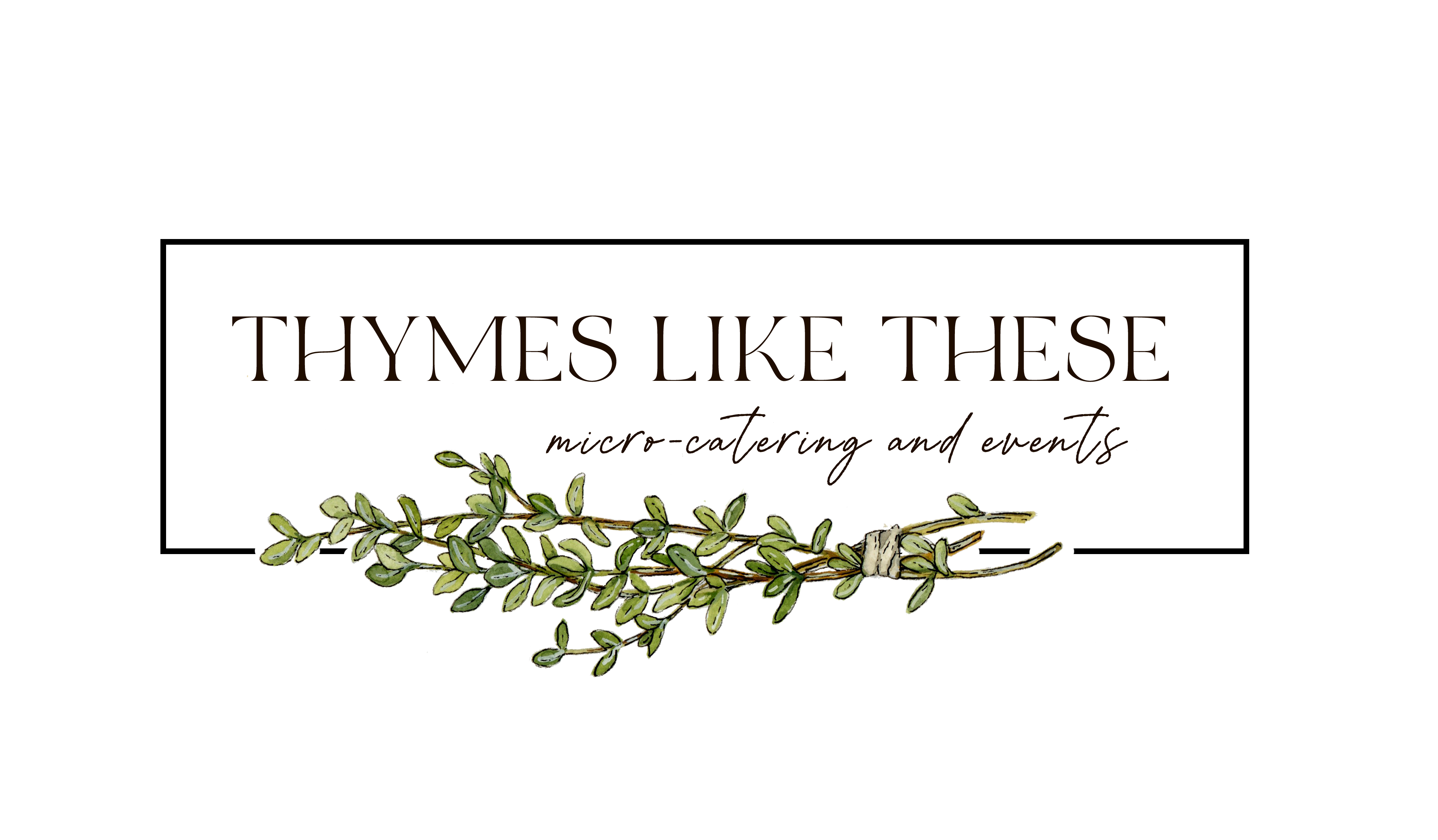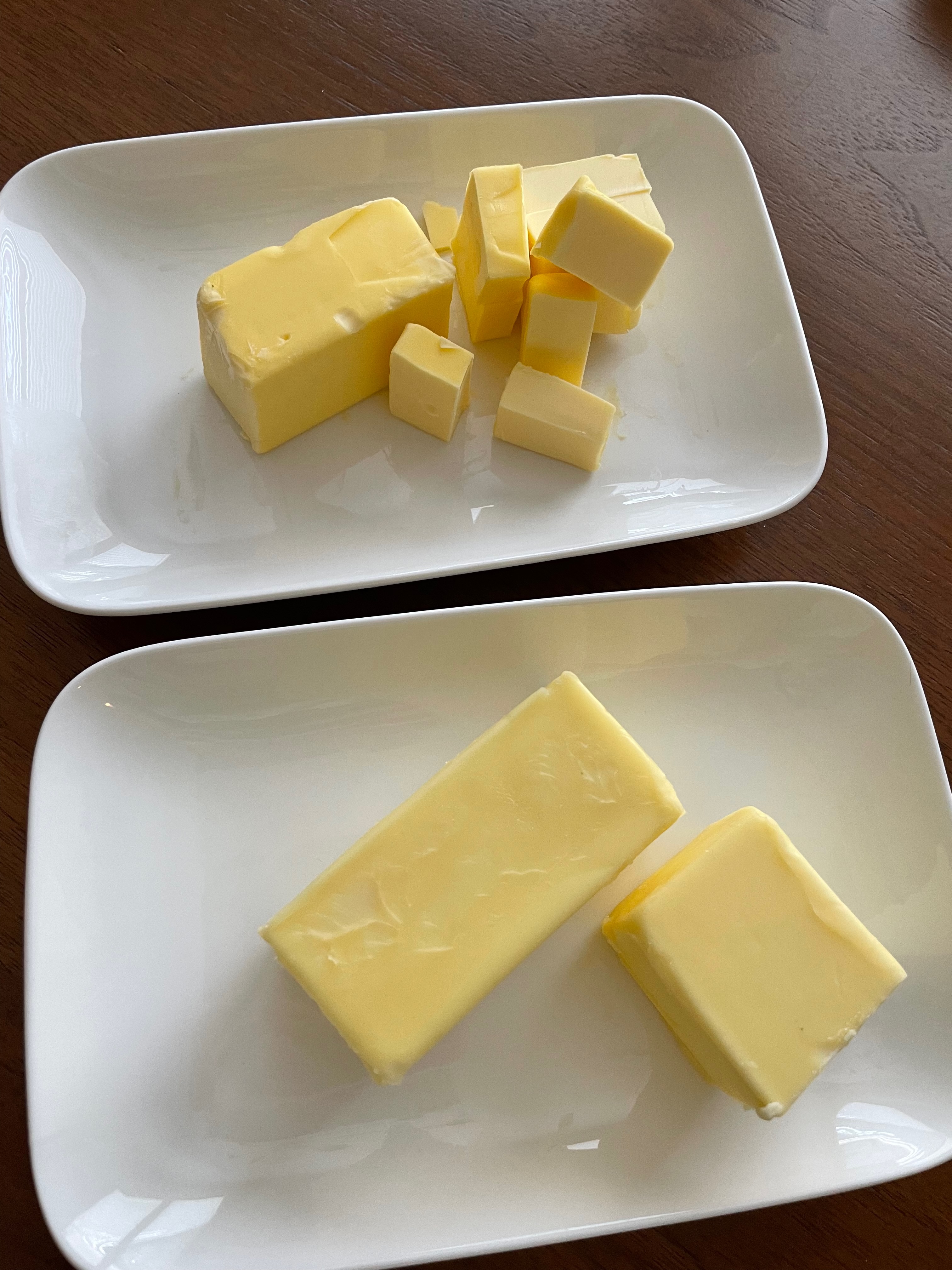I often think about what I would do if I could go back to my 18 year old self, who was dead set on going to medical school or researching cancer cures in a fancy lab somewhere. While I don’t believe in living with regrets, I do often wonder if I ever would have had it in me to pack up and move to France for a year or two for culinary school. While my passions have changed many times since then, the one thing that has remained constant since I was a little girl in my grandmother’s kitchen is my love for all things food and what it takes to create it. In my late 20’s, as I’ve turned this passion into a livelihood, I am repeatedly drawn to the traditions and cultural influences found in French cuisine. At the risk of sounding far too Idahoan, what I love most about it is the way that it makes simple things so damn fancy. Quality ingredients, precise techniques, and glamorous sophisticated outcomes. A cookbook I repeatedly turn to is Rebekah Peppler’s À Table, a work of art that I truly cannot recommend enough to anyone who wants to pretend that they did, indeed, go to culinary school in France in another fantasy life. Peppler’s writing style is such that reading it will make you want to pack up and move into a tiny apartment in Paris, spending your entire income on entertaining and hosting friends that become family in the most simple, laid-back, yet elegant and refined way. I truly do not know how the French do it; achieve such a gorgeous paradox. It is something that seems to have entranced Peppler as well, as the American expat has grasped and mastered this concept in a way that gripped me and found me all the way in Idaho.
One soapbox that Peppler gets on, comes from a sermon on the importance of using quality butter. If you spend enough time learning about any cooking outside of, well, the U.S., really, you’ll find that the gospel truth of delicious butter lies within high quality, European style butter. And, to cut to the chase, Kerrygold reigns supreme by just about every preacher of quality butter. Truly, if you can scale up your butter at any point, any kind of European should do, but Kerrygold stands the test of time. Also, have you ever had Dubliner cheese? Same brand. Life changing cheddar. Anytime I want to invest in a high quality end game, whether it be a weekend project of traditional croissants- which is what I find myself striving to do this weekend- I will post end results if it turns into something I’m not mortified by, or a drizzle of flavor infused butter on a braised meat dish that took hours to create, I toodle on down to the grocery store and shell out $5-$10 on Kerrygold butter. It’s worth it every time, I promise.
So, why should you take my word for it? If you’re looking to elevate your cooking and hosting game, or even just feel a little bit more Euro in your home kitchen wherever you find yourself, let me hit you with the facts.
Without getting into the science too far (remember, I did start out in the world of biology so this stuff does appeal to me a bit still), it boils down to fat content and a little bit of good ol’ beta-carotene. Since butter is made from cow’s milk, the fat content from this milk is what determines the fat content of the butter. Cows in America have a slightly different diet than cows found in Europe, where cows eat grasses and vegetables with a higher beta-carotene content. Now, I come from Dairyville, USA, so I’m careful not to diss the hard working dairy farmers of the United States whose families I grew up with, but I will say that the fat content that the USDA allows to pass as butter within products sold on the market is only 80%. This make it easier to not have to worry as much about the beta-carotene and fat content of the milk that cows create as a result of their diet. European butter, on the other hand, has a slightly increased fat content of 82%. Crazy what a difference in color that 2% makes, huh?
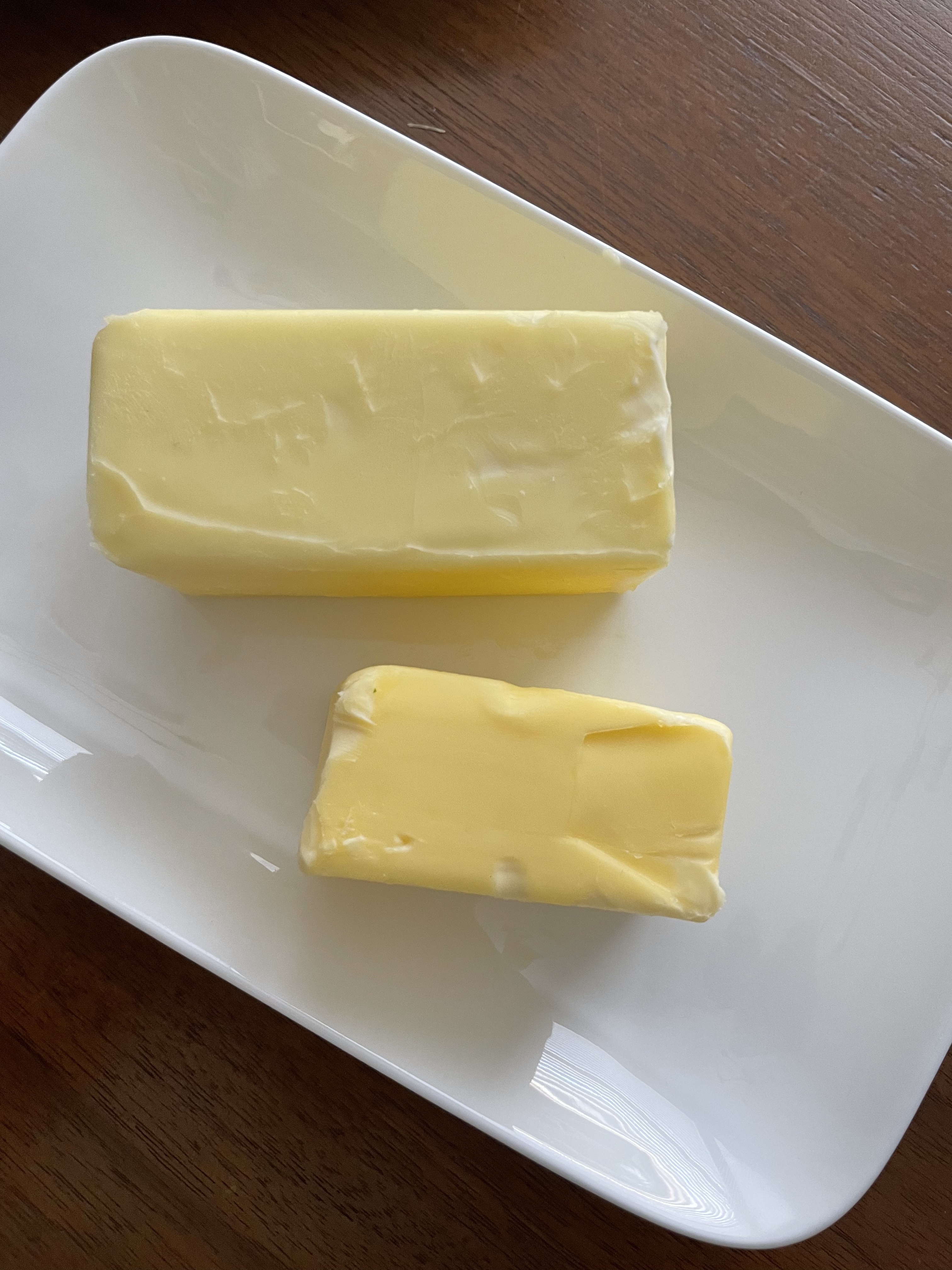
Ok, so I’ve explained in, arguably too much detail, how the color of butter is determined, but I’ve done nothing to explain how this creates a difference in the quality. While I’m not advocating entirely that American butter is always second fiddle to European butter, I do think that the taste is significantly different. If I were to have to eat butter like I would a cheese on a slice of bread, I find the flavor of the European butter more complex, richer, and tastier. However, the convenience, cost, and texture of American butter does indeed have a time and a place. In baking, most importantly, European butter’s longer churning time and (often) added cultures allow it to melt better and incorporate itself more homogeneously into your dough, your batter, or whatever end product you’re striving for.
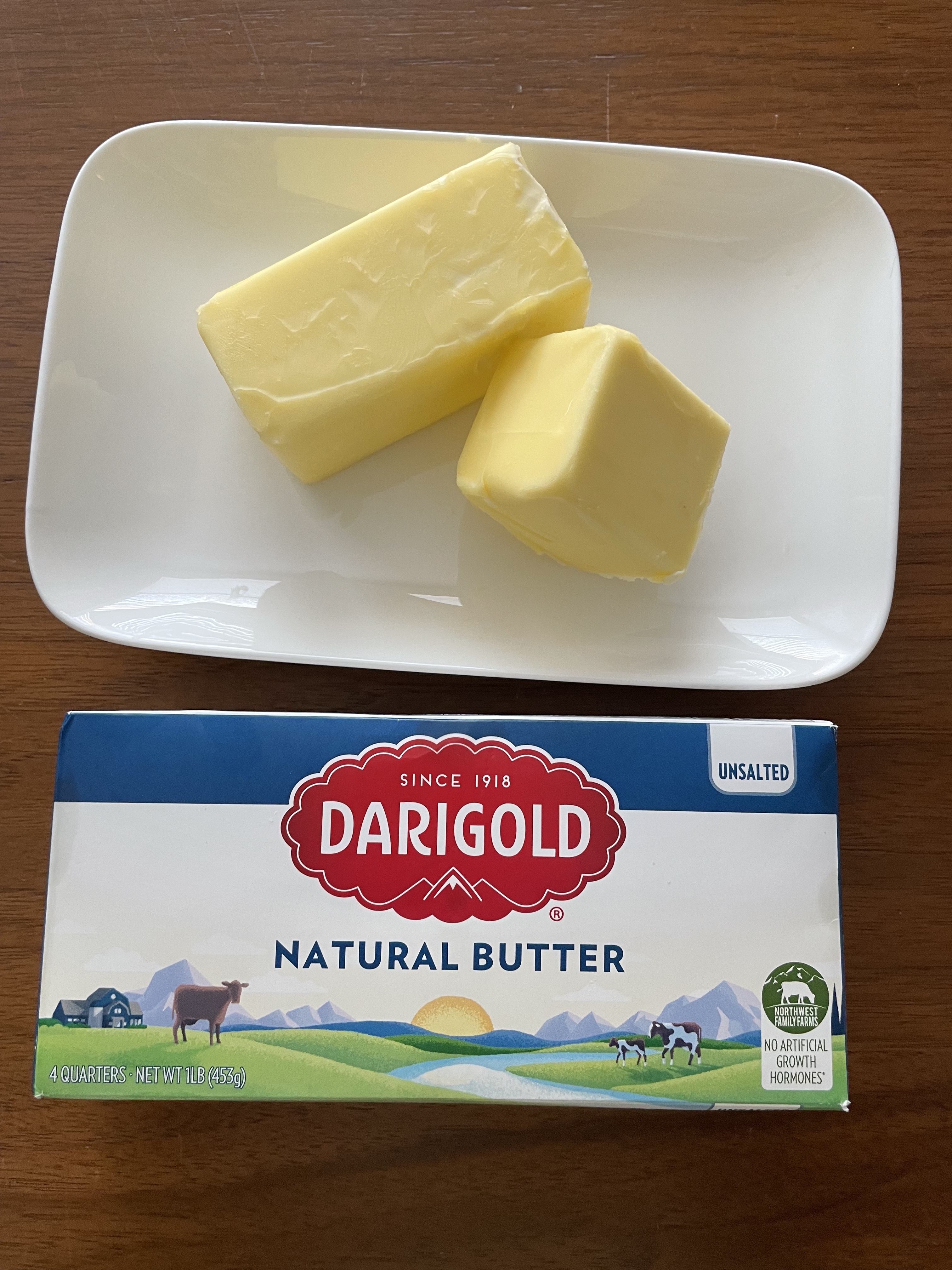
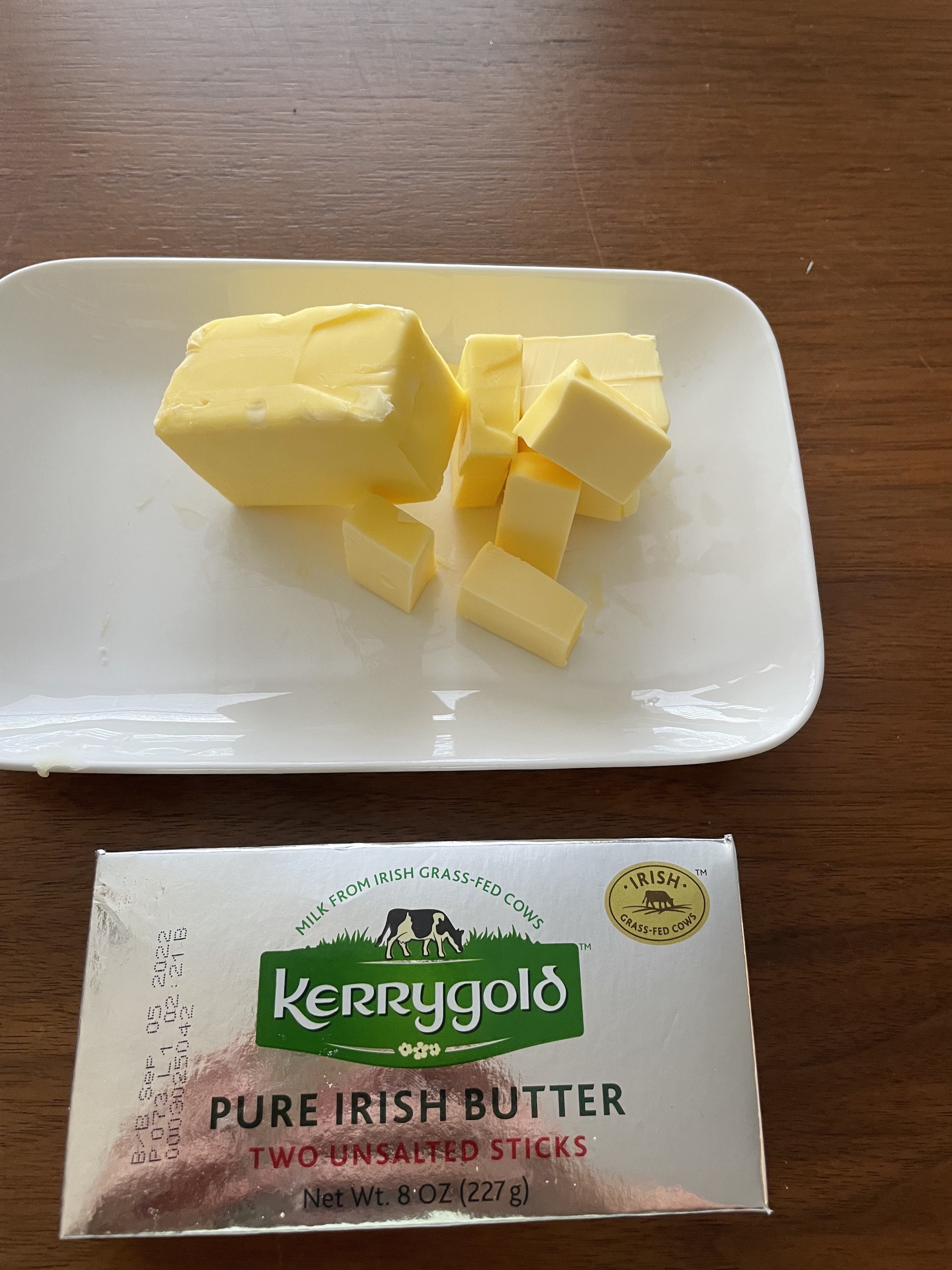
If you’re interested in learning more about when you want to use American versus European style butter, my WASPY cooking queen of her own empire, Martha Stewart, outlines well on her website the pros and cons of using each type. But, as my general rule of thumb, when you want to really taste butter in whatever you’re making, splurge on the Kerrygold. If you don’t mind not having a butter taste, and really need it for substance or fat content, American butter will do just fine. It’s versatile, inexpensive, and has a milder flavor for more “everyday” use. The next time you want to feel transported to France, however, grab the yummiest loaf of bread you can find and throw a hunk of European butter on it. You will not be sorry.
